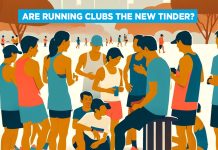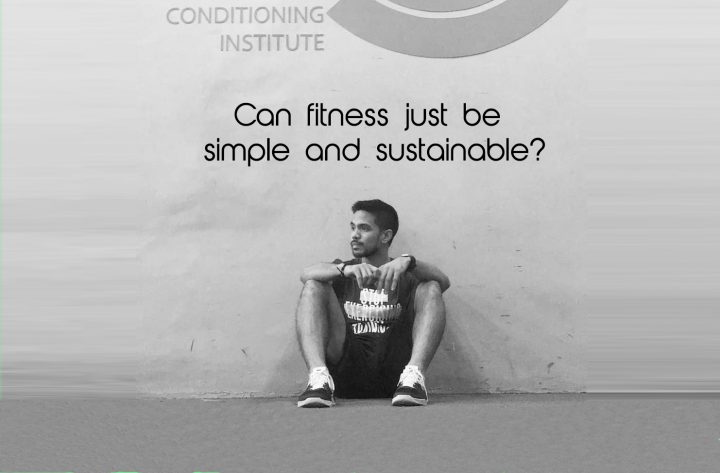
Whether you’re just in the beginnings of your fitness journey, or have been on it for quite some time, you’ll know of the frustrations of not seeing the progress you want to see.
We’re no strangers to the moments when we just want to just give it all up because we feel we’re plateauing; not achieving more than we had hoped. We struggle with sustaining routines as results always seem to be touch and go. Or we hesitate to start, because of doubts in our own abilities to commit to fitness.
And that’s fair. It’s tough to not be hard on yourself when you’ve made the promises, set the fitness goals, and hyped yourself up to commit to achieving them, only to fall short. Meeting dead end after dead end can feel pretty invalidating of your efforts, after all.
But here’s what we’ll tell you: Dead ends are also good for something. And that is it allows you to backtrack on all that you’ve done, assess where you can do better, and then act towards improving.
If you’re wondering if it’s really as simple as that, we reached out to SimpliFit Founder, Personal Fitness and Sports Coach Chappy Callanta and asked him these questions we’ve all collectively asked ourselves: Can fitness just be simple and sustainable?
Advocacy for sustainable fitness
“Early on, I had that clear distinction that I wanted to make things easier. I wanted to make things simpler,” says Coach Chappy when we asked him about his advocacy towards simple, sustainable fitness.
Working in the industry for so long, witnessing the many trends that come and go and the struggles of people in maintaining their health journeys, he found the idea of “keeping it simple” as the most efficient way of making fitness more approachable and sustainable.
“The healthy are getting healthier but the vast majority of the people who are…not physically healthy – don’t get to do enough exercise because they either get intimidated [or] they get confused.”
Whether it’s coaching a basketball team or fitness novices, Coach Chappy maintains the importance of simplicity in training so that people are less “intimidated” or “confused” about what should be a journey towards lifelong health.
Because as the problem with hypokinetic diseases rises globally we should strive to, as Coach Chappy says, “empower people to be able to make a plan for themselves.”
The three fundamentals of sustainable fitness
So if you’ve found yourself in the same confused and intimidated situation, what specific advice can Coach Chappy give you so that you can finally get started and, more importantly, sustain your fitness journey?
In a nutshell, Coach Chappy drew focus on these three fundamentals:
- Balancing nutrition and exercise;
- the importance of targeted coaching, and;
- calorie management over fad diets
If you follow Coach Chappy on Facebook, you’ll know that he regularly publishes content that helps you understand various fitness concepts. On his page, you’ll see infographics that answer questions you usually get complicated answers to, presented in a logical and simplified manner.
He explains these fundamental concepts in-depth below.
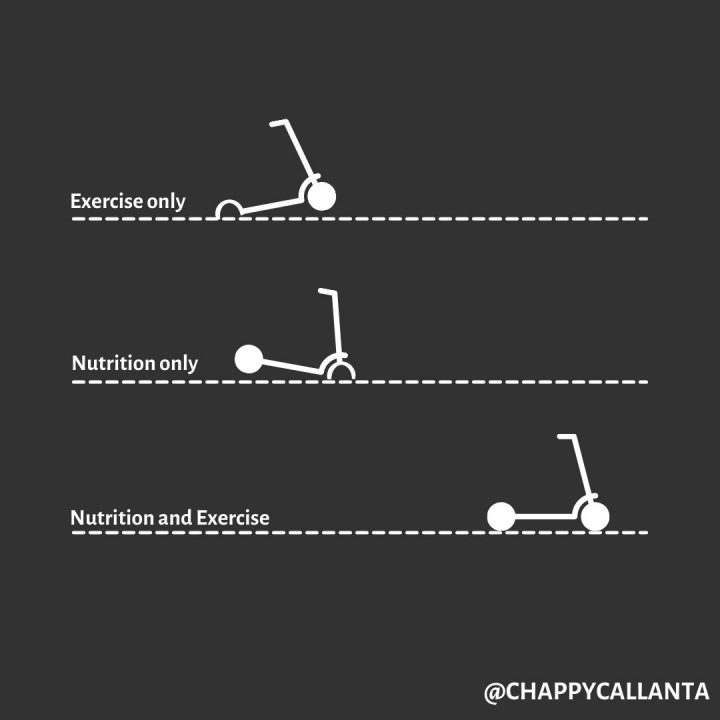
Balancing nutrition and exercise – why is it important?
I’ve always been asked: “What’s more important?” Was this a fair question? Or some other form of that question would be: “What should I do first? Should I diet first or should I exercise first?”
So I made that infographic to illustrate that it’s really the two wheels that are important if you want to progress in your health and fitness. If you only focus on one – and I’ll clarify: if you’ll notice, there’s a slight underlying element in the graphic. You’ll actually go further in terms of weight loss if you mind your nutrition only. So if you want to lose weight, you need to mind your nutrition – you will lose weight.
However, if you want to improve your body composition – which is what the goal should be. Because you can lose weight, without really getting healthier. You’re going to progress [with just minding your nutrition], you’re really going to lose some weight, but you’re not going to get healthier.
I just wanted to illustrate the importance of the two, because it has to go hand in hand. There is no fixed ratio (nutrition to exercise). Some people like to say 80:20, 70:30, all of that. Mas importante daw nutrition, or mas importante daw exercise…. The reality is: both of them are important and it depends on your goal.
If your goal is to lose weight, definitely nutrition will play a big role. If your goal is to be in tip-top shape – let’s say you’re an athlete or a performer – then you still need both. It’s still gonna go hand in hand.
How fast do you lose weight with both or either?
If it’s weight loss, nutrition will really play a bigger role. There’s a saying that you cannot out-exercise a bad diet. It’s like what we said earlier: “I’m gonna exercise so I can eat this big mac.” [Exercise then,] becomes an excuse. If [the goal is] weight loss, nutrition really plays a big part in losing weight; there’s no going around it.
Some people, they will say na yun nga: they make it an excuse na “I’m gonna exercise”, but it’s not gonna work. They might lose some weight – they will, actually. They will lose weight but it’s going to be slower.
On the other hand, if you just focus on nutrition, you will lose weight, but your muscular tone and… your performance systems (endocrine, cardiovascular, and musculoskeletal)… they don’t progress.
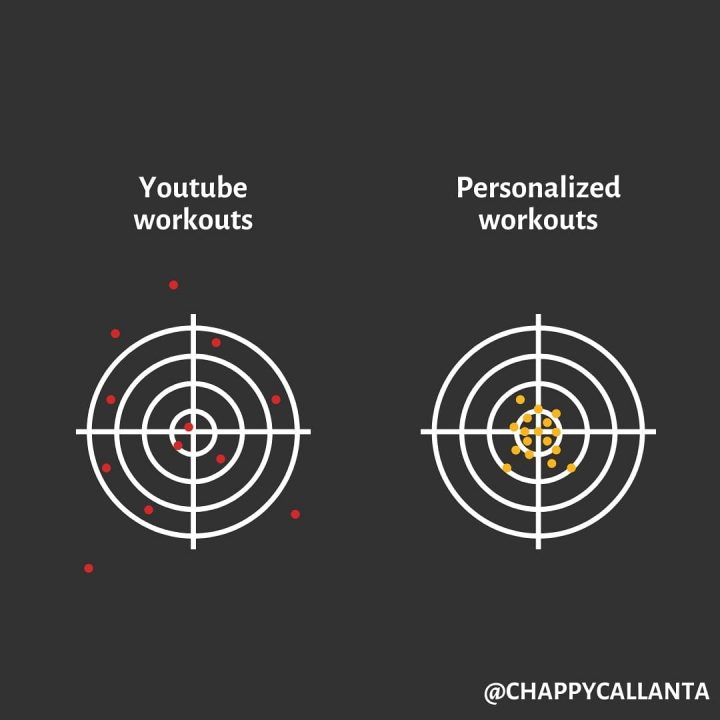
The difference between targeted and general fitness coaching in achieving goals
On the infographic, when you go to YouTube or the general workouts, sometimes it does hit the mark. So if you see there, parang may iba na tumama naman sa bullseye.
However, it will really depend if you are in a class or in a program that is tailor-fitted to your goals.
The first part is: you need to know your goals. You need to be clear about your goals and you need to not only know your goals, but you also have to put a timeline [on yourself]. Set SMART goals. That’s the first thing.
When you get targeted or personalized coaching, [the plan] also includes the techniques that you should be doing outside of sessions that you get in a personalized workout.
Some of those might be things that you get on YouTube, for example. Some of those might be group classes. Some of those might be what we call lifestyle fitness activities. However, you are in a plan, and that is the main difference.
Sometimes, [with YouTube workouts] you might hit the spot. But more often, you won’t, kasi nga hindi siya made for you. Being in a program that was designed not only for your goals. And not everybody considers this: but does that program on YouTube get the nuances that might be in your life?
Like you might only have time for 30 minutes…. Will it know how active or how inactive you are on a daily basis? Will it know what you eat?
So there are a lot of factors that are involved in actually making a program that will exhibit results. Sometimes, it might work yung mga random workouts, but more often [than not] it will not. Or it might work for a short period of time, then you’ll plateau, and then you’ll revert.
Are there instances that you would actually recommend someone take a general fitness class over targeted coaching sessions?
I actually recommend it all the time especially if it falls on their plan. When I prescribe exercise, I look at it as a continuum, in terms of your energy systems.
So at the very far end, is something akin to sprinting. Something like that. So the feeling of sprinting so fast. You cannot sustain that for a long period of time, so it’s a very short energy system. On the other end of the spectrum are longer duration workouts; yoga [and] dance class, for example; something you can sustain for one full hour.
I look at that continuum and see if there are holes I need to plug in when it comes to training for their energy systems, which not only helps them lose weight but also helps them be healthier individuals.
Let’s say the person is not very active, he’s a desk job person, wala masyadong activity. I would suggest three times a week something that just keeps him moving and will not hurt him. So what might that be? That might be…a yoga class, a pilates class; it depends, again. Those are all the stuff that I will consider.
So given all of that information, now I can give a very clear recommendation for what to do for what type of client. That’s not something that you can get on YouTube…. kasi wala namang ganon na nuances.
Targeted coaching: Some people think it’s inaccessible because there are costs to personal training that people are sometimes not ready to commit to or even afford. How do you address push-backs to targeted coaching in terms of its accessibility?
That’s actually a very fair question because that’s one of the…hurdles that people have to [overcome]. And that also kept me thinking about it: How can I help more people and, at the same time, make a living out of it?
Because that’s how we are. As coaches, we want to help people, but at the same time, we want to feed our families. That’s really why I started SimpliFit…. I’m trying to empower people to be able to make a plan for themselves. Give them the information that they need for a cheaper price compared to one-on-one coaching.
And then on the other side, of course, people need to be healthy pa rin. And that’s where us coaches…and the people who are trying to promote fitness have to be creative in trying to promote it.
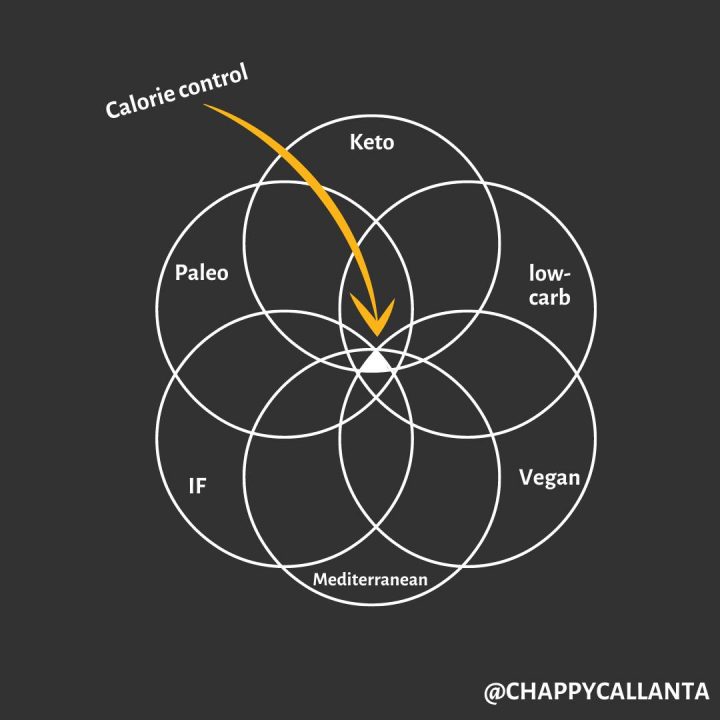
Calorie management: If you have an excess of calorie burn, can you really eat anything you want after?
To address that point on exercise: Exercise in itself doesn’t really burn a lot of calories if you think about it. Your regular exercise regimen of about 30 minutes to an hour – it won’t burn you that many calories.
People make the mistake [of going] 1:1 – one exercise is = to one meal. But with the way people eat nowadays, it’s not going to work. Our meals are definitely higher [in calories] than what we expend. So that’s the first thing that people need to make clear: Exercise will not burn you as many calories as you think.
Secondly, I made that graphic because people have been asking me: “What’s the best diet?” or “coach, I want to lose weight. What diet do you recommend?”
All of the diets, if you look at it, the one common thing about all of them is that they’re asking you to manage your calories.
[But in terms of] how you get there – there are different ways on how you get there. So if you’re a keto person, that means you manage your calories by really cutting down carbs and eating a lot of fat. If you’re a paleo person, carbs out, protein up, fat down. If you are an IF (intermittent fasting) person, calories at a certain time of day.
Everything will add up to caloric management. So when I’m talking about sustainable fitness and sustainable nutrition, the question really is: What plan will work the best for you and what plan will you be able to sustain?
On the flip side, I’m also not a big fan of diets that restrict a macronutrient (protein, carbs, fats). If it restricts one of those three which are essential for daily living, that’s bad news because your body needs that.
And this is where keto people will say, “well, we have ketones and ketones are a good fuel source for the brain.” But to get to that, you have to get to extreme starvation. If you can really say to yourself that, “I can do this,” [the next] question is, “can you do it for a long enough time that can be sustainable?” If the answer is yes, then okay, by all means, go ahead.
But if the answer is a no or even a maybe, then what might happen is you’re setting yourself up for failure. Because you can get there, but then, you won’t be happy, or you’ll slide back into your old habits.
So the trick really is to find that plan that you can be sustainable with and that it will be something that you can do for a longer period of time – and that’s lifelong health.
What are your most essential tips for keeping fitness sustainable for your clients that our readers and the fitness community, in general, can benefit most from?
It has to be a habit. When you’re setting up a habit, you kind of have to hack it a little bit. So for example, if you want to exercise – and this is a pretty common example – because they call exercise a keystone habit [that unlocks other good habits].
To form that fitness habit, you have to:
- Set your goals. Everything you do and think about in goal setting will lead towards the strategies that you will develop for sustainable fitness.
- Hack your environment a little bit. One way is to make it (your routine) a consistent time of day. Don’t mix around your workout times and make it a consistent time of day.
- When setting your goals, don’t overestimate yourself. In fact, you should underestimate yourself in this regard. Kasi if you say, “okay, I’m gonna commit an hour and a half a day” but realistically you can’t, what happens is you’re probably going to go full-on for a week and a half, or two, and then you’re just gonna fizzle out. Then you’ll just end up back where you started, or worse: you’ll regress even more.
Set realistic goals and set a realistic timeline for those goals. 30 minutes of activity per day – that should be the first thing that you should develop. 30 minutes of daily, purposeful movement. It doesn’t really have to be exercise. When I say purposeful, you’re really setting aside time for it. That’s the first habit you can build. - Keep in mind the 80-20 rule. Be successful 80 percent of the time. If you have to miss out 20 percent of the time, that’s fine. But try to hit that sweet spot of 80 percent success where 8 out of 10 days, you’re doing this habit. In a week, that would be 5 to 6 days.
Coach Chappy Callanta offers a wide range of personalized training services from helping you build a home gym, online training via Zoom, all the way down to asynchronous programs you can follow along at your own pace.
For those looking for a community to work out with, you can also follow a fitness course that Coach Chappy has set up and made available on SimpliFit for PHP 6,000 for a whole year of access. Your plan will include:
- Initial fitness assessment
- Exclusive content
- On-demand videos with classes that you can follow
- Access to Coach Chappy and professional coaches he’s trained
- Discounts to partner merchants for food delivery, weighing scales, holistic wellness, and others.
Are you trying to develop a more sustainable fitness regimen for yourself? Share your own best tips for keeping fitness simple and sustainable with the Pinoy Fitness Community!






